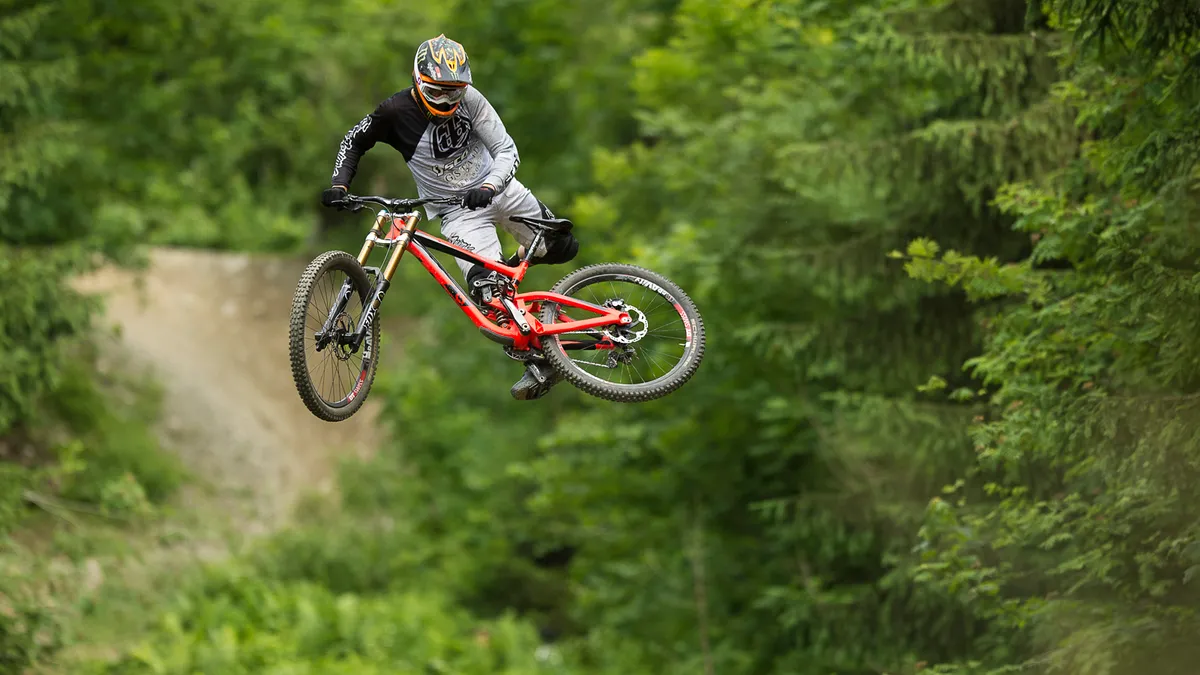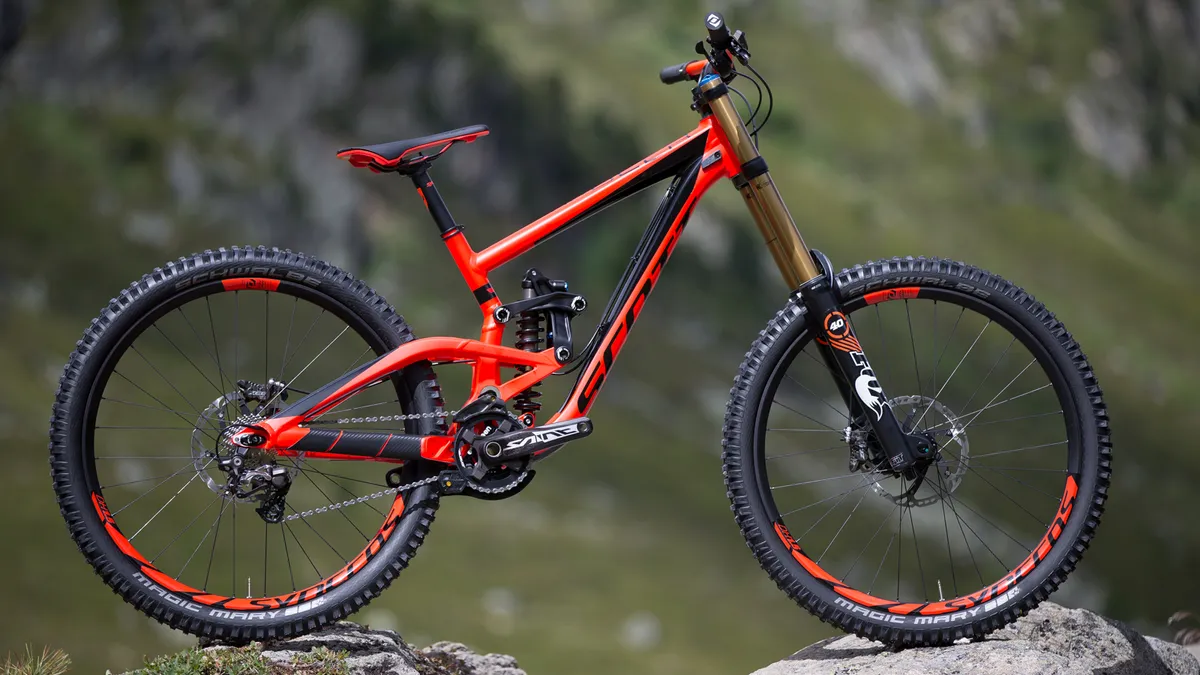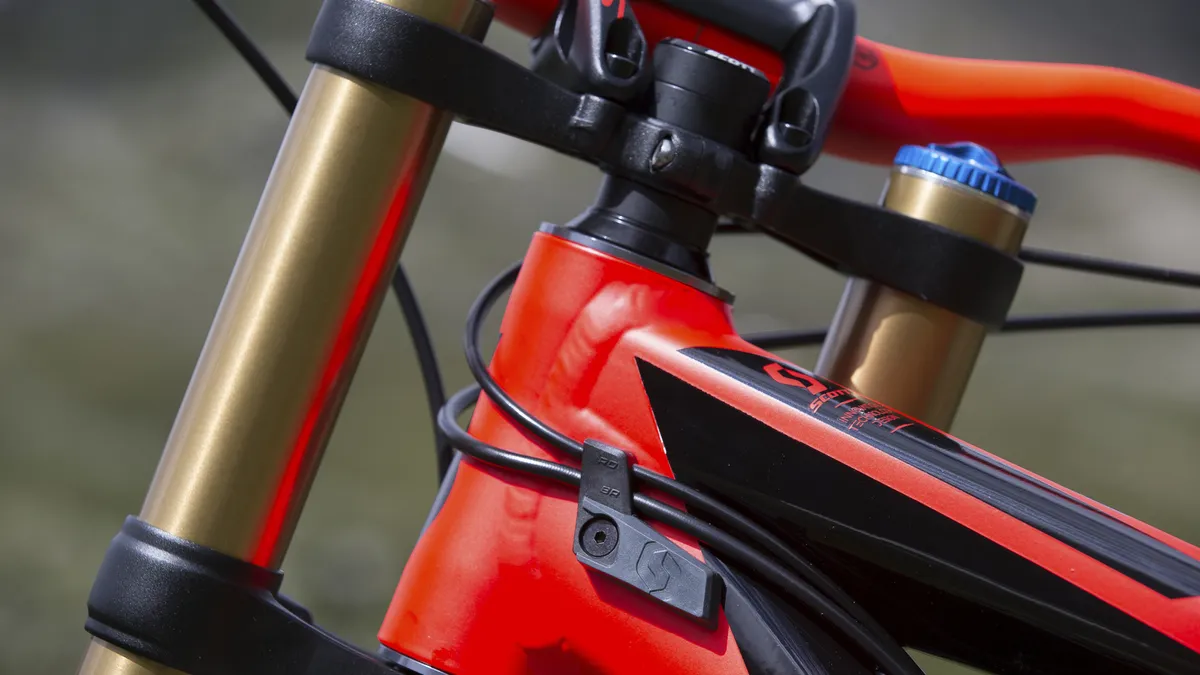Scott’s Gambler and Voltage series have been the brand’s mainstay gravity machines for some time.
For 2015 these established bikes get one of their most dramatic makeovers to date – the introduction of 650b (27.5in) wheels throughout the range and the subsequent changes that are necessary to maximise the advantages that this wheel size offers.
Check out more of our Scott 2015 coverage.
2015 Gambler
The Gambler is Scott’s premier downhill race.With 650b wheels sweeping through the World Cup downhill circuit, Scott began prototyping and testing larger wheels – and the result is the bike you see here, and which we first reported on from the Scott Australia launch event.
“The 2015 Gambler was built with the same intentions as its predecessor. We wanted this bike to be strong, fast and predictable,” says Scott.
Larger wheels comes the risk of reducing manoeuvrability, which is a big problem for downhill riding, and one Scott naturally wanted to avoid, so the company had to redesign the Gambler from the ground up around the new wheel size, while maintaining all the best attributes of the previous 26in model.
The new Gambler is packed with adjustability. It features a two-stage adjustable bottom bracket height (+/– 10mm), two chainstay lengths and a multitude of head angle options (from 61 to 65 degrees). The 2015 Gambler can run both 26in and 650b wheels.

The Gambler was refined following feedback from Brendan Fairclough. Here he is in action in Schladming
Not only are the wheels bigger, the frame also has extended reach following feedback from Scott’s factory World Cup shredder, Brendan Fairclough. The large and small frames have an extra 10mm reach (compared to the 2013 and 2014 Gambler), and the medium’s reach increases by 15mm. There’s still no XL size option, but the extra 10mm on the large, and the adjustability on offer should make the bike’s geometry more suitable for taller riders.
Part of the previous Gambler’s success was down to the design’s floating link, which delivered impressive support at speed and a progressive suspension curve that made the bike’s 210mm of travel feel endless.
For 2015, the engineers at Scott worked closely with the team at Fox suspension to maximise the way in which the new RC4 – with its thinner shaft – worked within the linkage.
The new floating link factors in these changes and alters the Gambler’s kinematics accordingly through some subtle pivot point changes. The new kinematics now feel more linear, yet are just as progressive as the previous mode and give a smoother return from the shock’s deep stroke after heavy landings.

The new floating link sits lower in the frame than on the previous Gambler design
The new linkage has also allowed the engineers to decrease the rotation of shock hardware, reduce bearing loads and, in doing so, increase durability and improve small-bump sensitivity.
2015 Voltage
The Votlage bridges the middle ground between downhill and freeride. For 2015, Scott has brought 650b to the Voltage range – but, so as not to alienate those who flip and whip their bikes, the new Voltage can be configured for both 26in and 650b wheels.
As well as new wheels, the voltage has a new frame that features adjustable and stiffer dropouts, interchangeable for different axles types, as well as chainstay lengths to suit both wheel sizes.

The two travel options are adjusted within a flippable shock mount that is hidden within the linkage. It delivers either 190mm or 170mm of travel via the Fox DHX RC4 shock
The travel is also adjustable between two settings - 190mm for downhill and 170mm for hitting the jumps. Stiffness has been boosted across the frame – Scott claims it has a 26 percent stiffer head tube and a 41 percent stiffer bottom bracket.
The new one-piece link and seatstay brace (which is also designed to remove mud build-up on your tyre) delivers a much stiffer bike compared previous Voltages, with a predictable kinematic that won’t throw riders off on differing terrain.

The 2015 design has built in yoke in the seatstay to increase the frame's stiffness and strength
The larger bearings (the same as those on the new Gambler), new internal cable routing and head angle that’s adjustable (via an angleset, again, like the Gambler) to allow a range of 62 to 65 degrees. This all helps round off a bike with a wealth of potential, and open up gravity riding to a riders on a budget or those who don’t want a full-on downhill bike.










